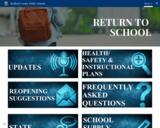
Web page with information for students, parents, and teachers
- Subject:
- Cross-Curricular
- Material Type:
- Reading
- Date Added:
- 09/03/2020

Web page with information for students, parents, and teachers

Designed for primary or elementary school learning, Pip tells the dewdrops about her bedtime routine. Everyone, including Pip, needs a goodnight sleep!

Third-grade students will use Bee-Bots to learn about budgeting and economic choices in this two-day activity. On Day 1, students will review their Bee-Bot coding skills and navigate an obstacle course while identifying the activity's input, processor, and output components. On Day 2, students will work in groups to program their Bee-Bots to collect objects with different values while staying within a budget of $10. Students will learn about economic choices, opportunity costs, and computing system components. At the end of the lesson, students will reflect on their choices and challenges and use recording sheets to track their progress. This lesson plan helps students learn essential skills such as opportunity costs, computing systems, problem-solving, critical thinking, and coding in a fun and engaging way.
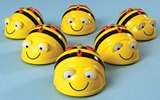
Create a Beebot Mat for students to practice SOL k.7 The student will recognize the attributes of a penny, nickel, dime, and quarter and identify the number of pennies equivalent to a nickel, a dime, and a quarter.
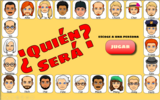
Students choose a character, then answer questions to reveal which was chosen. Practices description in Spanish. Sample game
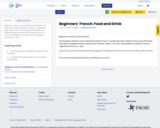
Beginners' French: Food and Drink
The students will learn how to talk about food in French. In particular, they will learn how to say what food they like and dislike using the verbs aimer (‘to like’), adorer (‘to love’), and préférer (‘to prefer’) and the negative structure ne … pas.

Chqe’tamaj le qach’ab’al K’iche’! is a set of beginner online course materials for K’iche’, a Mayan language of Guatemala

Students will be able to use two-letter consonant blends to decode & spell one-syllable words.

The purpose of this podcast is for students to listen and identify words that have the same beginning sound while doing physical activity.

Students will understand the importance of telling stories in order both verbally and with a graphic organizer.
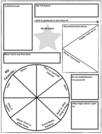
Learn all about your students with this About Me Handout! Teachers can give to students on the first day/week of school. Great for starting conversations, get to know you activities, or just to know about eah student.

Teachers will utilize this document by having students to complete the form when they do not follow classroom guidelines.

This module is designed to guide students in better understanding light. The students will also understand how light travels and interacts with other materials. The teacher will facilitate students' explorations as they generate a summary of their experiences. Throughout this unit, students will be guided in using practical materials such everyday items found in their classroom and light energy produced by flashlightThe goal of this module is for students to explore light and to better understand how it behaves. This module has been designed for 5th grade students or students who are developmentally ready to explore light. This module could also be used as a review for students in upper grades who need to build their fundamental understanding.

The teacher will review the following concepts from preceding lessons : Digital Safety (1.9) and Personal Information (1.10) . The teacher will introduce Digital Citizenship.

This is a slide show is intended to introduce students to networks, LAN, WAN, and WWW.
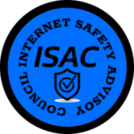
Provides a facilitator's guide, fact sheets, handouts, scenarios, and other resources for educators to help middle school and high school youth consider digital technology use, online safety, and mental and emotional health.

At the beginning of the lesson, students will have the opportunity for physical movement during the activator while reviewing the meaning of being a good citizen. Students will engage in collaborative conversations at multiple times to explore and analyze ways they should and should not use technology while at school. These collaborative conversations will allow students to have a stronger understanding of how they should use technology to support their learning before they share what they think is the most important way to be a good citizen while using technology through an independent activity of drawing and labeling.
"This is an assembly-style personal safety
presentation for children in grades 3|4|5
featuring the NetSmartzKids characters.
Kids will learn about the four NetSmartz
rules with a live presenter who engages
them through discussion, quizzes and
animated videos."

This guided reading of Edgar Allan Poe’s “The Bells” (1848) focuses on developing student understanding of imagery and other figurative language, strengthening reading comprehension, and strengthening expository and persuasive writing skills.

Students set up an apparatus as shown in the companion document. Using geometry coupled with Snell's Law, students are able to determine the index of refraction of multiple liquids. .